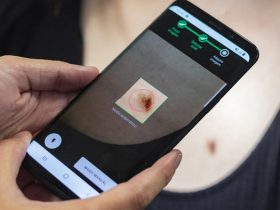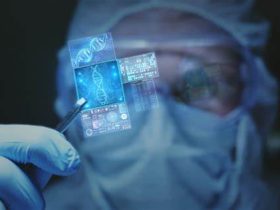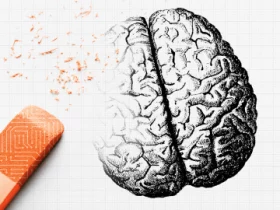While the concept of multimodal AI has been gaining traction, many companies and users still don’t understand the significance of this development.
While other types of AI can only handle a single data type at a time, what makes multimodal AI unique is that it can simultaneously manage various data from different sources—text, audio, video, images, etc.—to provide insights, generate content and predict upcoming situations.
For example, earlier iterations for ChatGPT were unimodal, but the more recent iterations are multimodal.
The multimodal AI market is expected to surge over the next several years with a CAGR of around 30% from 2024 to 2032. It is increasingly being adopted in diverse industries—from healthcare to automotive to finance—and the ability to harness multiple data modalities opens up many new possibilities.
This article will look at the role multimodal AI can play in healthcare, in particular, where it can help to better understand patient health by combining varied data sources into a singular view of patient data. Here are a few potential use cases and some insights into some of the challenges with multimodal AI.
- Improved Diagnostic Accuracy
Multimodal AI can analyze data from diverse imaging techniques, which could help healthcare professionals offer more precise diagnoses. For example, by combining image data with patient records, genetic information and lab results, healthcare professionals should be able to gain a more comprehensive view to deliver more accurate diagnoses.
The ability to provide these insights could improve AI’s ability to assist with everything from complex disease diagnosis to anomaly detection.
- Drug Discovery
Multimodal AI can fuse information from biological data, molecular structures, clinical trials and other relevant sources to unveil complex patterns and links that traditional AI can’t identify.
Furthermore, multimodal AI can predict drug effectiveness and possible side effects by analyzing multimodal data which should result in safer and more efficient clinical trials.
- Personalized Treatment Plans
Multimodal AI can help craft personalized treatment plans integrating generic data, lifestyle details and clinical records. Further analyzing how different patients find medications by merging data from electronic health records (EHRs), clinical trials and real-world instances can also help to optimize drug prescriptions. - Patient Monitoring And Management
Multimodal AI can offer opportunities for improved continuous health monitoring by performing data processing coming from wearable devices and EHRs. This type of analysis should offer better support for chronic disease management for conditions like heart disease and diabetes.
Through analyzing patterns and trends in real-time data from past health records and wearables, healthcare providers and patients can receive early alerts to anticipate potential health problems.
- Advanced Surgical Assistance
Multimodal AI models can also enhance AI-enabled AR systems by placing virtual information onto the surgical field to improve accuracy and safety. Integrating intra-operative data and real-time feedback from surgical instruments, for example, could help to diminish the risk of errors in complex surgeries.
Challenges Of Multimodal AI
Multimodal AI is a relatively new concept—even in the ever-evolving field of AI—and it is also more complex than traditional AI. Therefore, it introduces some new challenges and concerns that must be addressed, such as:
- Data Availability: Patient data may not always be available, but it is essential for multimodal AI to function.
- Data Privacy And Security: Maintaining patient data privacy and handling sensitive patient information may require new cybersecurity measures and privacy frameworks.
- Data Heterogeneity: Multimodal AI integrates data from various sources in different data formats, consistency and quality. This can be challenging for data handling.
- Clinical Adoption: Given its complexity, integrating multimodal AI solutions into clinical workflows will require careful training, planning and change management for seamless clinical adoption.
These challenges can be overcome by combining technical advancements, including building standardized data formats, aiming at easily explainable AI models. It will also require, like with other forms of AI, implementing appropriate security measures and creating ethical guidelines.
Also, AI experts, healthcare professionals and patients will need to collaborate to successfully implement and adopt multimodal AI in healthcare. As with everything in healthcare, this process could require several years of testing.
That said, if done correctly, integrating patient data from numerous sources has the potential to transform disease diagnosis, prevention, treatment and, ultimately, patient care. With multimodal AI, we can expect considerable advancements in patient care and better healthcare delivery.






























Leave a Reply